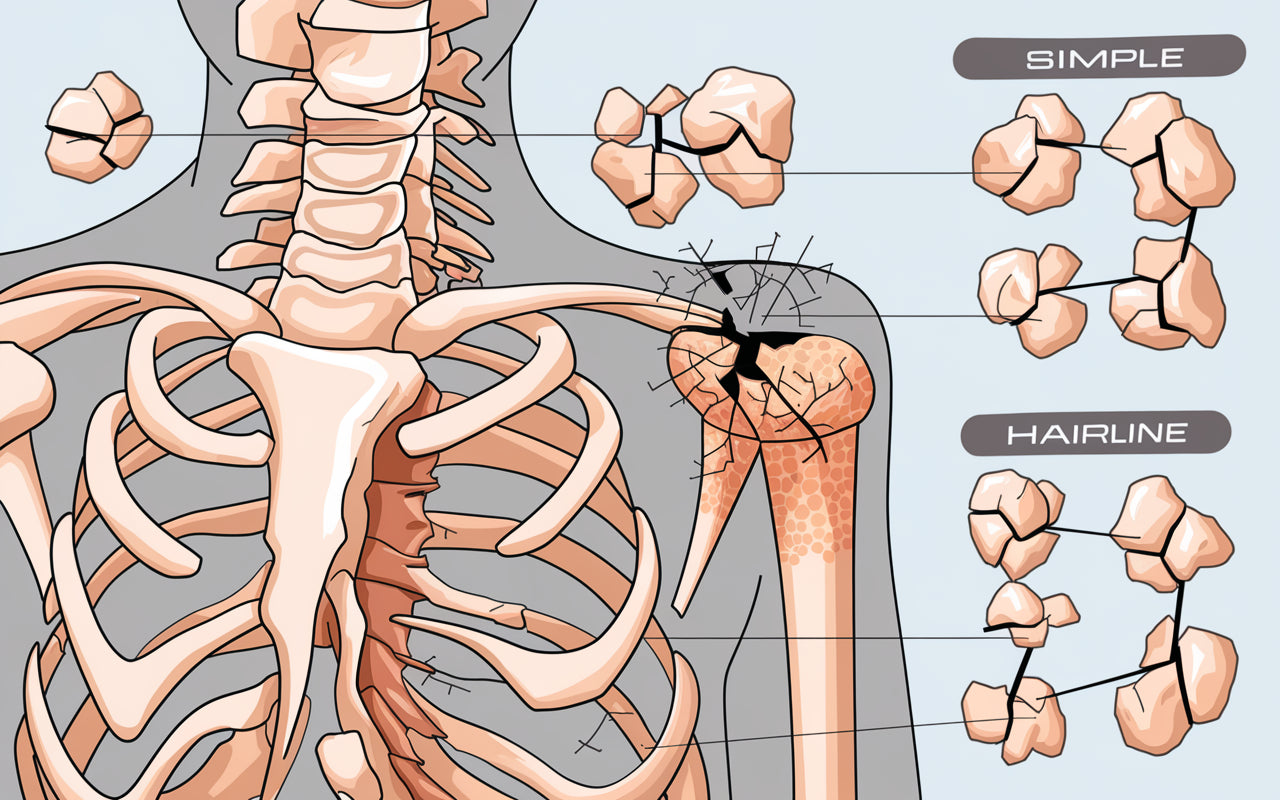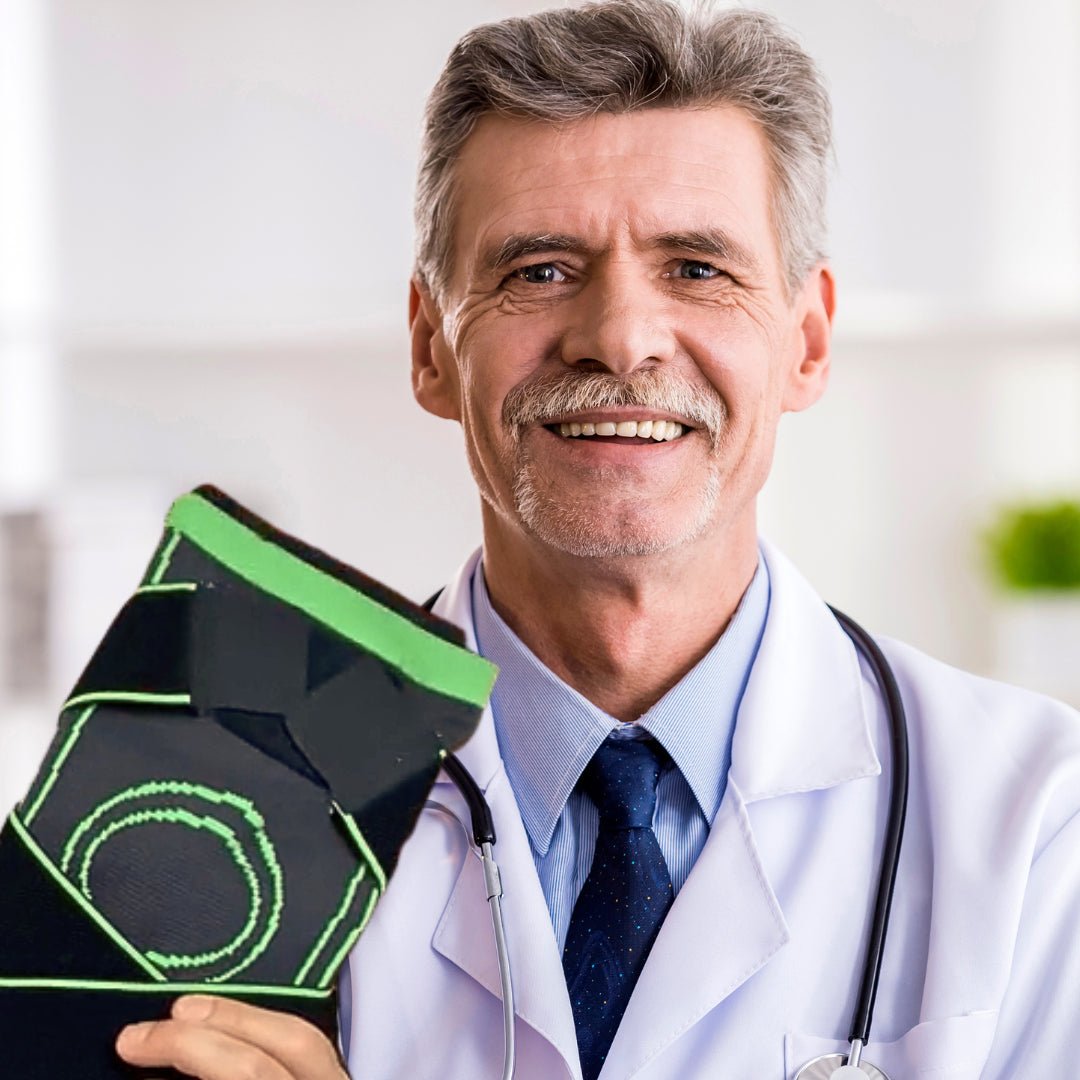Benbrudd: Symptomer, årsaker og behandling

Broken bone symptoms can vary, but often intense pain and swelling are experienced. Broken bones, also known as fractures, are serious injuries in which a bone is broken completely or partially. This can be caused by trauma, falls, accidents, or underlying medical conditions that weaken the bones, such as osteoporosis. This article reviews the symptoms, causes, and treatment methods for broken bones, as well as how you can speed up your recovery according to recommendations from 1177 and other healthcare sources.
What is a bone fracture?
What is a broken bone? A broken bone occurs when a bone is subjected to a force that exceeds its strength. Broken bones often occur when a person falls or receives a strong blow. It is common for the foot to be caught under the body during a fall to cause a broken bone. A fracture can be open or closed. In an open fracture, the bone protrudes through the skin, while in a closed fracture, the skin is intact.
Fractures can be simple (where the bone is broken but the skin is intact) or complex (where the bone breaks through the skin). There are also different types of fractures, including crack, spiral, and compression fractures. Bone tissue has a certain elasticity, but if too much stress is applied, the bone can break. The injury can range in severity from a small crack to a complete fracture.
Symptoms of bone fracture
Symptoms of a broken bone vary depending on the location and severity of the injury. Common signs that you have broken a bone include:
- Intense pain at the site of the injury, especially with movement or pressure
- Swelling and bruising around the affected area
- Visible deformity or abnormal angle of the injured body part
- Limited mobility or inability to use the arm or leg
- Snapping sound at the time of injury
- Loss of sensation or tingling in severe fractures
- Pain and inability to use the injured body part normally
In children, additional signs may include a reluctance to move normally or not wanting to use the arm or leg. Therefore, children are more likely to have symptoms that can be confused with other injuries but should be treated as regular bone fractures to be on the safe side. Children are more likely to sustain a bone injury in situations where adults would be able to survive without a fracture because the softer bone in children can be more susceptible to injury, but at the same time, children's bones are more flexible.
Causes of bone fractures
Bone fractures are usually caused by trauma, such as falling, being in a car accident, or suffering a sports injury. Bone fractures often occur when a person slips or falls, especially in older people whose bones become more fragile over time. The risk of bone fractures increases with age because bones become more fragile over time.
Other factors that can contribute to fractures include:
- Osteoporosis: A condition that weakens the bones and increases the risk of fractures
- Overuse: Repetitive movements can cause stress fractures, especially in athletes
- Underlying diseases: Conditions such as cancer or infections can weaken bones
- Falls or collisions: Often occurs when a person falls in a certain way or collides with something
Children can suffer fractures in situations where adults might only get bruises. This depends on how the injury affects their growing skeleton. In situations where an adult would get a sprain, an adult would suffer an injury that is less severe than in a child, where the same force can cause a fracture because a child's skeleton is softer.
Treatment of bone fractures
Treatment for a broken bone depends on the type and severity of the fracture. The goal is to stabilize the bone, relieve pain, and speed up the healing process. Here are the most common methods used for broken bones:
1. Immobilization
Description: The leg is fixed with a plaster cast or splint to keep it stable.
Benefit: Promotes proper healing and reduces the risk of malposition.
2. Operation
Description: Metal plates and screws are used to fix the bone, often in more complicated fractures.
Advantage: Necessary for unstable or severe bone fractures where plaster is not enough.
3. Pain relief
Description: Painkillers, often over-the-counter options containing paracetamol, are used to reduce discomfort.
Benefit: Makes recovery more comfortable and makes it easier to follow other treatment.
4. Physiotherapy
Description: Rehabilitation with exercises after the cast is removed. The focus is on regaining strength, mobility and function in the injured body part.
Benefit: Helps the body return to normal function and reduces the risk of future problems.
Treatment of adults
For adults, treatment usually includes immobilization by being in a cast, and possibly surgery depending on the fracture. Painkillers containing paracetamol can be used to manage the pain. Rehabilitation with a physiotherapist is often necessary after the cast is removed, which usually takes four to six weeks.
Treatment of children
Treatment for children is similar but is adapted to their growing skeleton. Children may sometimes need to be sedated during treatment to reduce discomfort. A parent or close relative should always be with the child during treatment to provide reassurance. If the doctor suspects that the bone is damaged but does not see a clear fracture on X-ray, children may still be casted as a precaution.

How Knee Comfort™ and Termoreliever™ can help with recovery
After the broken bone has begun to heal and you receive permission from the healthcare professional to put weight on the injured body part, various aids can be of great benefit. You can get an aid from the healthcare provider that will facilitate recovery.
The Knee Comfort™ is a specially designed knee brace that provides support and stability to the knee during rehabilitation after a fracture in the lower leg or knee area. It helps reduce strain on the injured area and improves comfort during daily activities. During recovery, you may need to use the other foot more, and a knee brace can help support the healthy side as well.
Termoreliever™ offers heat therapy that can be used to relieve stiffness and improve blood circulation in the affected area after immobilization. The combination of these products can contribute to faster recovery and increased comfort during the healing process, which often takes a long time.
After the cast is removed, you may need help from a physiotherapist to regain mobility and strength in the injured body part. It is important to watch for signs that the cast is not fitting properly, such as increased pain, numbness or skin discoloration.
Preventive measures
Although it can be difficult to prevent accident-related bone fractures, there are measures that can reduce the risk:
- Maintain a healthy diet rich in calcium and vitamin D for strong bones
- Exercise regularly to strengthen muscles and improve balance
- Using protective equipment in sports with a high risk of injury
- Avoid dangerous environments where the risk of falling is high
- Be extra careful when it is slippery outside to avoid slipping and falling.
Conclusion
Bone fractures are a common but manageable injury with proper diagnosis and treatment from an outpatient specialist. By being aware of the symptoms and seeking care in a timely manner, most people can make a full recovery. If you suspect that your bone is broken or if you are in pain and unable to use a part of your body, you should seek medical attention immediately.
Using supportive aids such as the Knee Comfort™ and Termoreliever™ can further enhance the recovery process by providing stability, relieving discomfort, and promoting better blood circulation. A parent or other close relative can be an important support during the healing process, especially for children.
Rehabilitation and recovery after a broken foot
After initial treatment, the recovery process is crucial:
- Rest and relieve the foot as directed by your doctor.
- Gradual return to normal activity under supervision
- Perform recommended exercises to strengthen the foot and regain mobility
- Use supportive aids like the FootSupport 2.0 for extra stability
- Follow regular check-ups to ensure healing is progressing as it should.
- Be alert for signs of complications such as increased pain or swelling
Healing time varies depending on the type and location of the fracture. Simple fractures can heal in about six weeks, while more complex fractures can take several months. Children often heal faster because their bones grow and heal faster. If plates or screws have been surgically inserted, these are usually removed when they are no longer needed, especially in younger children. Some patients may also experience burning feet during rehabilitation.
Frequently Asked Questions (FAQ)
How do I know if I have a broken bone?
Typical signs include intense pain, swelling, bruising, deformity, and inability to move the affected body part.
How long does it take for a broken bone to heal?
The healing process varies depending on the type of fracture but usually takes 6–12 weeks. Full rehabilitation may take longer depending on the extent of the injury.
Can I use Knee Comfort™ after a knee fracture?
Yes, Knee Comfort™ provides support and stability during rehabilitation after a knee fracture by reducing the load on the affected area.
What is Termoreliever™ good for during recovery?
Termoreliever™ offers heat therapy that relieves stiffness, improves blood circulation and contributes to increased comfort during recovery.
What happens if I don't treat a bone fracture?
Untreated fractures can lead to malposition, chronic pain, impaired function in the affected body part and, in some cases, infections in open fractures.

